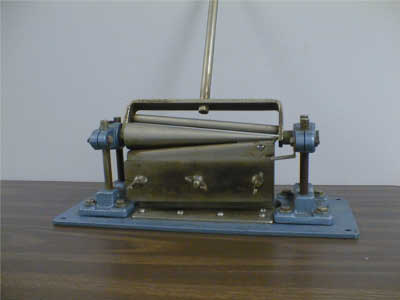Paint and Coatings Formability Testing
 Conical Mandrel Bend Tester
Conical Mandrel Bend Tester
Touchstone offers many tests to evaluate the formability of painted or otherwise coated metal products.
Mandrel and T-Bend tests, performed under ASTM D522, are used to evaluate the flexibility of coated strip metal that is to be formed during a fabrication process. It is explained in more detail below.
“Standard Test Method for Mandrel Bend Test of Attached Organic Coatings” ASTM D 522
ASTM D522 contains two test methods which are used to determine the flexibility or resistance to cracking of organic coatings on substrates of sheet metal or rubber-type materials.
The coating materials to be tested are applied at a uniform thickness to panels of sheet metal or rubber-type materials. After drying or curing the coated panels are bent over a mandrel and the resistance to cracking of the coating is determined. In one test method, the coated panels are bent over a conical mandrel. In the other, the coated panels are bent over cylindrical mandrels of various diameters. Coatings attached to substrates are elongated when the substrates are bent during the manufacture of articles or when the articles are abused in service.
Baker Bender
The Baker Bender is a unique bend test, invented by Everett Baker, Senior Scientist at Touchstone Research Laboratory. It is used to evaluate paint adhesion on light gage metal. It does this by producing a variable radius — based on “T-bends.” The lowest radius at which paint adhesion fails is a measure of paint/metal formability.

